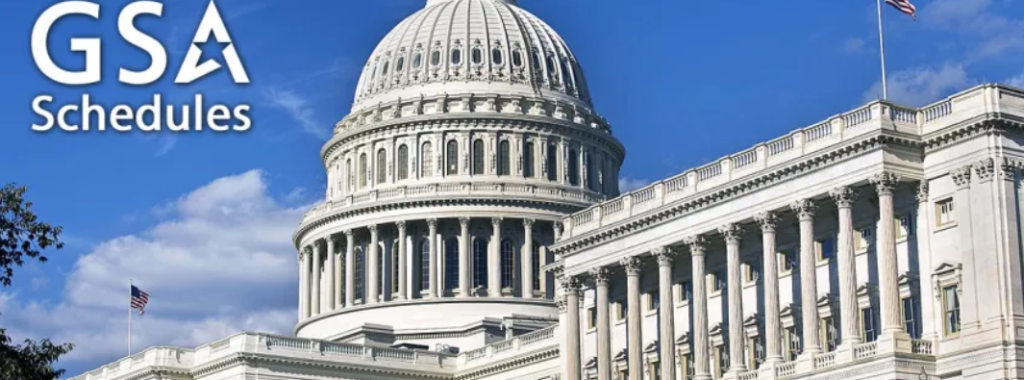The federal procurement process is governed by hundreds of laws, regulations, and clauses. Among commonly overlooked ones are the competition requirements. In this post we will cover everything you need to know on this topic. More specifically: what are competitive requirements of the Federal Government; why these requirements are important; are there any exclusions from the competition rules; and what is the optimal bidding strategy when it comes to competitive solicitations.
Once again, what are competition requirements?
- ONCE AGAIN, WHAT ARE COMPETITION REQUIREMENTS?
- OK, BUT ISN’T THE LACK OF COMPETITION GOOD?
- COMPETITION REQUIREMENTS FOR PROCUREMENT FROM THE FEDERAL GOVERNMENT 6
- FULL AND OPEN COMPETITION AFTER EXCLUSION OF SOURCES
- IN WHAT CASES ARE COMPETITION REQUIREMENTS NOT MANDATORY IN THE ACQUISITION PROCESS?
- A STEP-BY-STEP PROCUREMENT PROCESS WITH THE FEDERAL GOVERNMENT
- REQUIREMENTS FOR COMPETITIVE BIDDING
- HOW DO I PROPERLY RESPOND TO COMPETITIVE BIDS FOR GOVERNMENT AGENCIES?
This is a requirement stated in the FAR Part 6. Basically, whenever contracting officers issue public solicitations, they are required to provide for open full and open competition within these solicitations. That is, a contracting officer shall promote conditions for fair competition between GSA contractors, and must not under any circumstances set the solicitation’s technical or other requirements in such manner as to put one of contractors in a privileged position over all others.
It is worth to underscore one thing you could easily miss here: contracting officers are required to promote competition. This means that for the federal government, competition between vendors and service providers is a natural and preferred way to procure products and services.
Ok, but isn’t the lack of competition good?
No, not for the federal government. As economists know, the lack of competition on any market leads to degradation of bid quality. It is competition that drives the quality of products and services forward. The federal market is not an exclusion.
Here is why the GSA wants fair competition in almost all cases (see exclusions below):
- To save costs. The main principle the government follows when selecting a contractor is the best value for money. With enough competition, a contracting officer has a range of offers to choose from, and hence can minimize costs without sacrificing value.
- For transparency. Open and publicly available competition means that the federal government contracting process remains transparent to the public. This helps build public trust to federal agencies and governmental institutions, in general.
- To prevent frauds. The lack of competition provokes unfair vendors to raise prices and may lead to degradation of product quality. On the other side, obligatory competition makes it much harder for contracting officers to pull their rank in their own interests and give preference to specific companies.
- To maintain quality. Competition between vendors leads them to readjust their offers in an attempt to make them more attractive to federal buyers. This means that competition motivates businesses to improve the quality of their services and products to keep up not only with the federal government quality requirements, but also with their competitors.
Competition requirements for procurement from the federal government 6
Federal Acquisition Regulation (FAR) Part 6 “Competition Requirements” defines three levels of competition:
- Full and Open Competition (FAR Subpart 6.1)
- Full and Open Competition After Exclusion of Sources (FAR Subpart 6.2)
- Other than Full and Open Competition (FAR Subpart 6.3)
Let’s examine the differences between them.
Full and Open Competition
Under normal circumstance, FAR Subpart 6.1 requires that CO “promotes and provides for full and open competition in soliciting offers and awarding Government contracts” by means of fulfilling and maintaining conditions for full and open competition.
There are two mechanisms the government uses to implement full and open competition:
- Sealed bids
- Competitive proposals
Both procedures require contracting officers to have some minimum number of competitive offers to choose from. Multiple Award Schedules (MAS) issued under GSA consolidated Schedule solicitation are also treated as a competitive procedure.
Full and Open Competition After Exclusion of Sources
Occasionally, agencies may choose to exclude some sources from the competition. This could be done if it is believed that doing so will promote more intense competition between remaining contractors, to have an alternative source of parts or supplies, or to ensure backup supply sources in case of emergencies, such as COVID-19 pandemic, when higher demand is anticipated.
Various types of small business set-asides are also end up in this category. They include:
- Small Business set-aside contracts
- Section 8(a) of the Small business Act
- HUBZone set-asides
- VOSB, SDVOSB, WOSB and other set-asides.
Other than Full and Open Competition
Even though competitive acquisition process is a preferred way of doing business with the government, in some specific cases other than the full and open competition regulated by FAR, Subpart 6.3 is initiated.
Here is a list of potential circumstances that permit following various other than full and open competition procurement procedures:
- There is only a limited applicable source of options, while other sources do not meet the requirements and/or specifications of the solicitation.
- Urgent need; in case time cannot wait and there is extreme urgency, the GSA may allow purchasing supplies from a single source, without competition.
- National emergency, or industrial mobilization.
- International agreements. Competition is not required when it comes to procuring supplies from other countries, according to terms of international treaties.
- Authorized or required by statute. This clause basically allows to set aside contracts under certain programs, for instance HUBZone Act, 8(a) program, Women-owned small business set-asides (WOSB Program), UICOR, Veterans Benefits Act and others. Authorized reselling via some GSA reseller or directly is also a case when this clause applies.
- National security. When it comes to national security, the government may waive the competition requirement if that would require disclosing specific nuances of the solicitation, and put national security to risk.
- Public interest. The head of the agency may decide that it is in the country’s best interests that acquisition of particular items is performed without full and open competition.
In what cases are competition requirements not mandatory in the acquisition process?
As we explained above, the competition requirements are not obligatory under specific circumstances. In these circumstances, the federal government can procure from a sole source.
However, such sole source, non-competitive acquisition cannot be initiated by a contracting officer in a snap; it must be justified. Moreover, negotiations on any sole source contract can only start after a preliminary full and open competition process was initiated.
In other words, competition is natural and is good for the government, so if you look at getting on GSA Schedule, you should be ready to compete with other vendors for the most fruitful contracts.
A step-by-step procurement process with the federal government
Overall, the procurement process consists of several stages. Some of them are a prerogative of a contractor, other are done by the buying agency.
From the point of view of a contractor, it all starts with registering as a GSA contractor to apply for a GSA Schedule. The contractor then publishes an online GSA catalog and a pricelist. The process itself is multistage and often not as obvious as it may seem, so there is nothing wrong with asking for GSA contract help from some seasoned experts.
For government agencies, a solicitation begins with market research. Aside from its direct forms, it also includes more formalized Sources Sought Notices (SSNs) and Requests for Information (RFI). These two instruments help the agency to presents their formalized requirements to the public and evaluate responses. On the one hand, it allows to estimate the offer among businesses, see if there are enough providers among contractors that are ready to fulfill the task. On the other hand, such approach allows modifying the solicitation requirements according to actual capabilities of the existing offerors, based on their responses.
It is worth emphasizing one more time, that contracting officers must promote fair, full and open competition whenever possible.
The competitive requirements are formalized in the following regulations:
- Federal Acquisition Regulation (FAR) Part 6.
- Defense FAR Supplement (DFARS) Part 206
- The Competition in Contracting Act (CICA) of 1984
Requirements for competitive bidding
The requirements to the bidding process aim to make bidding a fair and open process. In particular, every bidder must have equal access to all available solicitation information. Also, competitive bidding means that procurement officers must not and cannot offer assistance in completing the RFP or RFQ to any service provider, provide additional information to selected services providers only, or receive gifts from them in exchange for any preferences.
How do I properly respond to competitive bids for government agencies?
As you now see, competition is a natural part of government contracting, so you should be prepared when it comes for bidding.
There are two types of bidding: sealed bidding and competitive bidding. If the solicitation is published as a Sealed Bid, price would be a major factor, because all other requirements are very specific. As soon as all technical requirements of the solicitation are met, the lowest bid wins. End of story.
But with competitive bidding you can compete not only through prices, but also via the way you provide your services or products. Importantly, following the solicitation instructions and requirements is vital. Literally. Because if you don’t, a contracting officer has the right to exclude your bid for non-compliance.
One of primary things to consider is, of course, its type. Some solicitations do not result in signing a contract, others do. Make sure you know the difference, because agreeing to accomplish a contract you don’t fully understand is on the list of careless mistakes one can make to ruin the potential of being a government contractor.
Making a great proposal also has its nuances. Please read through our blog, as we have already covered this matter here and here.
Every solicitation is somewhat unique, so we recommend reading through it very thoroughly and make sure you understand every single requirement, including those that are related to the set of required documents, order of sections in the proposal, and even the fonts.
Conclusion
Overall, competitive requirements of the federal government have tons of nuances and hidden pitfalls that a rooky contractor can easily miss. That is why we always recommend consulting with a GSA experts like Price Reporter before you apply for a Schedule. Price Report provides consultations, assistance with getting onto a GSA Schedule, and GSA contract management services. Also, with our GSA pricing tool you can research the federal market to gain information for competitive bidding in the future.
With over 17 years of experience, Price Reporter successfully helps small and medium sized businesses to acquire federal government contracts, negotiate better prices, communicate with contracting officers on your behalf to avoid potential problems and facilitate faster reviewing. We provide all kinds of legal and technical support services related to government contracting. Contact us, we are ready to help you.








